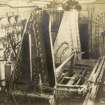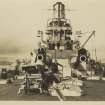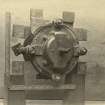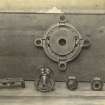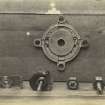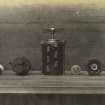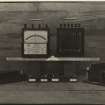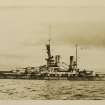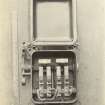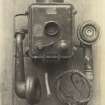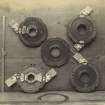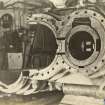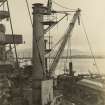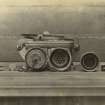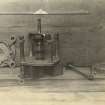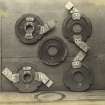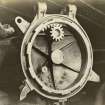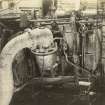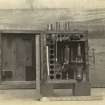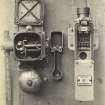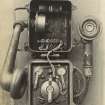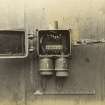Sms Baden: Swanbister Bay, Scapa Flow, Orkney
Battleship (20th Century)
Site Name Sms Baden: Swanbister Bay, Scapa Flow, Orkney
Classification Battleship (20th Century)
Alternative Name(s) Bring Deeps
Canmore ID 226350
Site Number HY30SE 8006
NGR HY 3643 0467
NGR Description Removed from HY c. 313 015
Datum Datum not recorded
Permalink http://canmore.org.uk/site/226350
- Council Orkney Islands
- Parish Maritime - Orkney
- Former Region Orkney Islands Area
- Former District Maritime
- Former County Not Applicable
HY30SE 8006 3643 0467 removed from c. 313 015 [N58 53.7 W3 11.5]
N58 55.5 W3 6.25
Formerly entered with classification cited as battlecruiser.
NLO: Swanbister Bay [name centred HY 360 048]
Bring Deeps [name centred HY 300 022]
Holm of Houton [name: HY 315 029]
Calf of Cava [name: HY 322 006]
Barrel of Butter [name: HY 352 009]
Point of Tuberry (Cava) [name: HY 334 993]
Stromness [name: HY 253 090]
Scapa Flow [name centred HY 36 00].
For other ships within this group, see:
HY30SW 8001 Kaiser (battleship)
HY30SW 8003 Prinzregent Luitpold (battleship)
HY30SW 8005 Kaiserin (battleship)
HY30SW 8006 Karlsruhe (cruiser)
HY30SW 8013 Konig Albert (battleship)
HY30SW 8016 Derfflinger (battlecruiser)
ND39NW 8041 Seydlitz (battlecruiser)
ND39NW 8045 Moltke (battlecruiser)
ND39NW 8049 Hindenburg (battlecruiser)
ND39NW 8050 Von der Tann (battlecruiser)
ND39NW 8051 Nurnberg (cruiser).
For general plans of High Seas Fleet (Internment Formation) wrecks in Scapa Flow, see Van der Vat 1986 (endpapers), Smith 1989, 4, Macdonald 1998, 19 and George 1999, 35.
Beached: used in RN gunnery tests and finally sunk in 1921 off Portsmouth.
P L Smith 1989.
Listed among 'German salvage sites'.
G Ridley 1992.
This ship was interned in the Bring Deeps group, but an attempt at scuttling proved inadvertent as British forces brought the ship ashore to Swanbister Bay.
Information from RCAHMS (RJCM), 11 November 2002.
R and B Larn 1998.
Length: 623ft 6ins (190m)
Beam: 99ft (30.2m)
Draught: 28ft (8.5m)
Displacement: 28,075 tons
Propulsion: Schulz-Thorneycroft boilers (mixed or hybrid coal and oil); steam turbines; 4 propellers; 52,800shp; 22 kts [noted by Jane as designed hp 34,000; 21 kts].
Armour: belt 13.75ins (350mm); turrets 13.75ins (350mm) [Different but unverified figures cited by Jane].
Armament: 8 x 38cm (15ins: twin turrets); 16 x 15cm (5.9ins: 45 cal: single mountings); 4 x 8.8cm AA (3.4ins: 45 cal: single mountings); 5 x 60cm (23.6ins) torpedo tubes
Complement: 1171/1271
This battleship was the second unit of the Baden class to be completed; SMS Bayern and SMS Baden were completed before the Armistice but work on a further two hulls was suspended in 1917. The ships of this class were the heaviest in the High Seas Fleet, and they may be considered as 'super-Dreadnoughts' comparable to the British 'Queen Elizabeth' class on account of their main armament being heavier than the standard 30.5cm (12ins).
Baden was built by Schichau at Danzig, being laid down on 14 February 1915, launched on 30 October 1915 and completed in November 1916. She apparently saw no significant war service, and did not arrive at Scapa until 9 January 1919, being the 74th and last ship of the Internment Formation to arrive. This was the only capital ship not to be successfully scuttled by her crew, being instead taken under tow and beached in Swanbister Bay.
The location cited for this wreck is evidently secondary (post-beaching), as it falls within shallow waters on the N side of Swanbister Bay. Van der Vat (1986, endpaper maps) places the ship at HY c. 313 015 [N58 53.7 W3 11.5], making this the most northerly ship in the Bring Deeps group. This location lies about 0.7nm NW of Calf of Cava light and in a charted depth of about 37m. The nature of the local seabed is not specified on the chart but this location lies within an extensive area of foul ground and there is a rock outcrop to the E.
The Bring Deeps group of heavy ships, which were scuttled within the area defined by Holm of Houton [name: HY 315 029], Calf of Cava [name: HY 322 006] and Green Head (Hoy) [name: ND 303 993]. Bring Deeps may be understood as a south-eastwards extension of Hoy Sound. It has a generally flat bottom at a charted depth of between 35 and 50m; the seabed type is defined sparingly but is apparently sandy. An area of spoil ground is noted around N58 53.9 W3 12.2 [HY 30 01], and may attest to the former presence of the High Seas Fleet.
Information from RCAHMS (RJCM), 6 January 2003.
H M Le Fleming 1961; D Van der Vat 1986; D M Ferguson 1988; P L Smith 1989; R Macdonald 1990; R Macdonald 1998; [Jane] 2001.
HO Chart 35 (1980, revised 1991).
This vessel is considered a 'casualty' rather than a craft on account of its successful salvage, the available evidence being written rather than material. In the absence of diver survey, however, artifacts, fittings and, possibly, structural elements may survive on or in the seabed at the location of scuttling. Depressions in the seabed may also represent the locations of the turrets or superstructure.
Information from RCAHMS (RJCM), 10 January 2003.
(NMRC reference SZ46NE 43: 1163523). This ship was expended as an experimental target in gunnery trials off the Isle of Wight on 16 August 1921. Although her location is often cited as St Catherine's Deep, she actually lies about 30 miles further S, close to the mid-channel buoy (E1). The location cited is N50 31.62 W1 17.79 [SZ 4986 6999] at a depth of 'almost' 200ft (61m).
(Diving guide references cited and recovery of artifacts noted under RoW amnesty).
NMRS, MS/829/53.


































